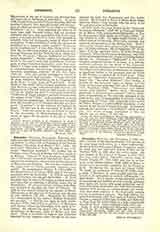

Durandus (DURANTI, DURANTIS), WILLIAM, canonist and one of the most important medieval liturgical writers; b. about 1237 at Puimisson in the Diocese of Béziers, Provence, d. at Rome, November 1, 1296. He was called “Speculator” from the title of one of his works, “Speculum Judiciale”. He studied law at Bologna under Bernard of Parma and then taught it at Modena. Clement IV (Guy Foulques, 1265-1268, also a Provencal) summoned Durandus to Rome, ordained him subdeacon, and gave him titular canonries at Beauvais and Chartres. He was then attached to the papal curia as Auditor generalis causarum sacri palatii. He accompanied Gregory X (1271-1276) to the Second Council of Lyons (1274) and, as the pope’s secretary, drew up its decrees. In 1279 he was made dean of Chartres, but did not reside there. At about the same time he went to Romagna as papal governor and succeeded in subduing a rebellion under Guy of Montefeltro. He destroyed Guy’s fortress della Ripa and founded in its place the town of Urbania. In 1286 he was elected bishop by the chapter of Mende (Mimatum) in the province of Narbonne, but did not go into residence till 1291. Meanwhile his diocese was administered by his nephew, William Durandus the younger. In 1295 he was again in Italy (under Boniface VIII, 1294-1303) as governor of Romagna and Ancona, where the Ghibellines were again in rebellion. He refused the pope’s offer to make him Archbishop of Ravenna, came to Rome, and died there. There is no reason to suppose that Durandus belonged to any religious order, though he has been claimed by both the Dominicans and the Austin Canons. He is buried at Rome in Santa Maria Sopra Minerva, where a long epitaph tells the story of his life and gives a list of his works.
Of these works the most famous is the “Rationale divinorum officiorum” (first ed. by Fust and Schoeffer at Mainz, 1459, and reprinted frequently, at Ulm by John Zainer, 1473; latest ed. at Naples, 1839). It was written in 1286. Its eight books contain a detailed account of the laws, ceremonies, customs, and mystical interpretation of the Roman Rite. Book I treats of the church, altar, pictures, bells, churchyard, etc.; II of the ministers; III of vestments; IV of the Mass; V of the canonical hours; VI of the Proprium Temporis; VII of the Proprium Sanctorum; and VIII of the astronomical calendar, manner of finding Easter, Epacts, etc. Durandus’s “Rationale” is the most complete medieval treatise of its kind; it is still the standard authority for the ritual of the thirteenth century and for the symbolism of rites and vestments. The allegorical explanation of vestments, for instance, as signifying virtues or the garments worn by Christ in His Passion, is taken from its third book. Other works are “Speculum Legatorum”, afterwards enlarged into “Speculum Judiciale” (four books), a treatise on the canonical rights of legates and the forms of canonical processes (first ed. at Strasburg in 1473; Frankfort, 1668); “Breviarium, sive Repertorium juris canonici” (Rome, 1474), “Breviarium glossarum et textuum juris canonici” (Paris, 1519), both commentaries on the decretals, arranged in the same order; and “Commentarius in canones Concilii Lugdunensis II” (Fano, 1569, with a life of the author by Simon Majolus), a semi-official exposition of the canons of the Second Council of Lyons. Durandus’s epitaph also mentions a “Pontificale“, which is now lost. For works wrongly attributed to him see Schulte (op. cit. infra.), II, 155-156.
ADRIAN FORTESCUE

